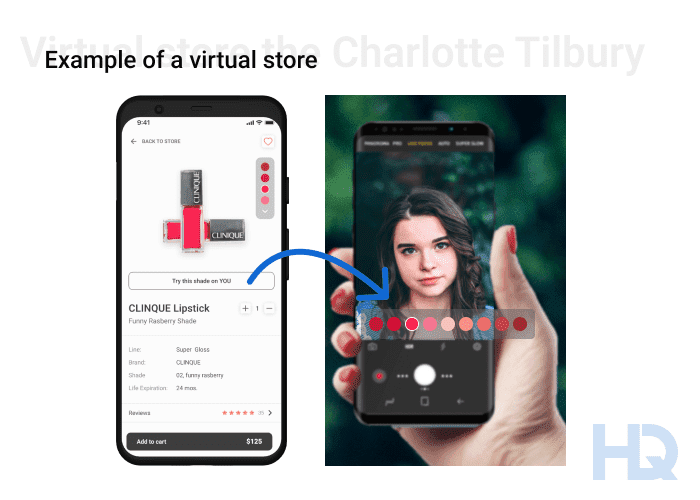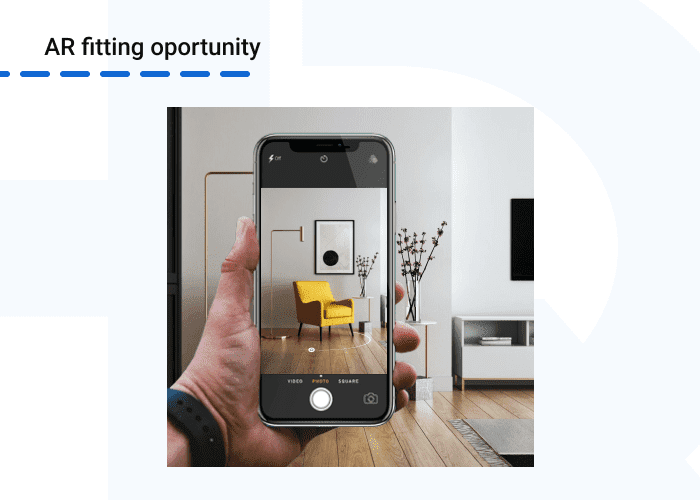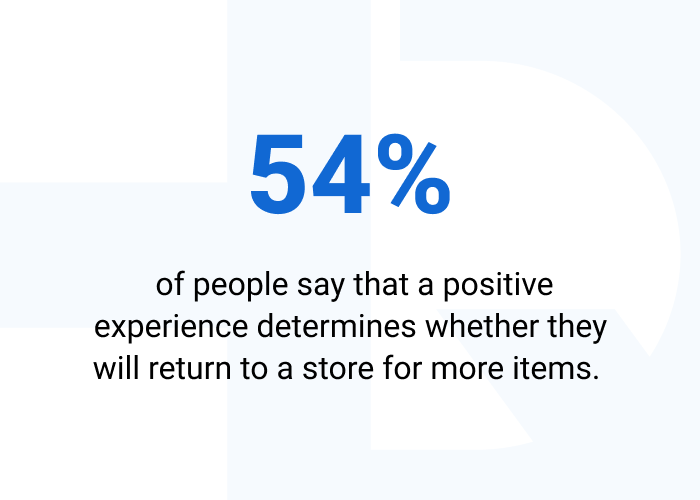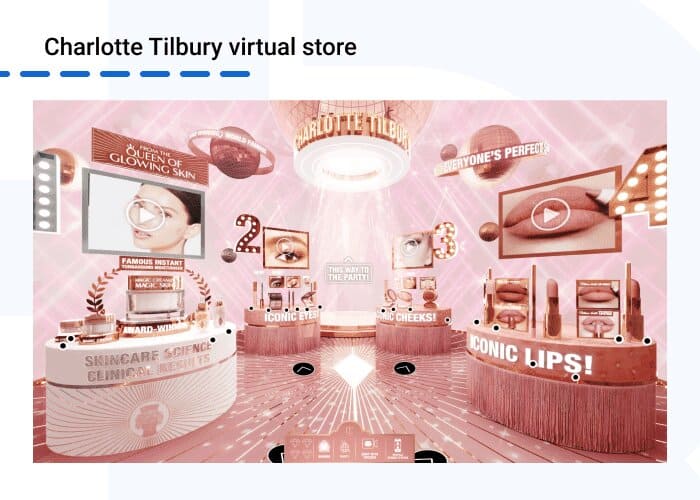How Does a Virtual Store Work?
The Benefits of a Virtual Store
COVID-19 has had a significant impact on online shopping. According to statistics, the pandemic added $102.08 billion to US e-commerce. People started to spend more time on the Internet, including online shopping. Today, about 22% of people shop online every week, and 27% do it every two weeks.
Now people can find and buy almost everything on the Internet because of the plethora of various online stores. But how to stand out among this variety?
Companies may choose, for example, to implement Augmented and Virtual Reality. Most often such technologies are used to create virtual stores.
How Does a Virtual Store Work?
The Benefits of a Virtual Store
In this article, we will examine what it means to build a virtual store and how it will change the future of online shopping. As a bonus, we will look at successful and globally recognized examples of virtual stores.
A virtual store is an e-commerce enterprise powered by Extended Reality. Virtual stores use various modern technologies such as Virtual and Augmented Reality, holographic displays, and 3D models. They immerse customers in the VR shopping experience and provide lots of possibilities to present products to users.
Virtual stores should be distinguished from conventional websites. Both are e-commerce technologies but offer different mechanics of user engagement and product demonstration. Of course, virtual stores provide more visibility and involvement.
Customers feel like they are inside a physical store and can virtually interact with products. The development of different virtual scenarios makes the customer journey easier and more personalized, pushes visitors to make a purchase, and helps reduce returns.

That’s a basic understanding of the virtual store’s concept. Let’s examine the operating principles in detail.
Virtual stores successfully combine the features of traditional and online shopping. Just like in a physical store, customers can interact with a product and get comprehensive information about it.
Features of online shopping, in turn, include remote access to a shop 24/7, comprehensive search, personalized recommendations, fast processing, and various payment methods.
But most importantly, a virtual store solves a crucial problem in traditional online shopping. It allows users to virtually try on items or interact with them before buying.
How often do people decline to buy new clothes online due to fear of choosing the incorrect size? The Nike Fit app can deal with such a problem.
Users just need to point a smartphone camera at their feet, and via AR technologies the app will accurately determine shoe size. In this way, users will be more confident in their choice and more likely to make a purchase.
Another area where people often face difficult choices is furniture selection. Are you worried whether a new sofa will suit your interior? This is where the Pinterest application can help.
Since the app collaborates with large furniture manufacturers, users can virtually try out more than 80,000 shoppable items in their surroundings and choose the right ones.

Of course, a virtual online store cannot equivalently replace physical interaction with products. But, on the other hand, it gives opportunities that a brick-and-mortar store cannot provide, such as visually placing furniture in your room before buying, or giving you the opportunity to explore all varieties of one product.
Various types of products require different presentations and interactions. So, there are several types of virtual stores, which we will discuss below.
Virtual stores differ in the type of interaction their offer, with customers and with the real world:
The diversity of virtual stores covers various areas of interest and brings as many goods as possible into the virtual environment. Thanks to its numerous benefits, more and more brands are adopting the virtual shopping experience.
So, what advantages can virtual stores offer businesses? Let’s explore below.
Virtual online stores benefit businesses in several ways.
The opportunity to interact with a product in a virtual environment or see it in the right surroundings helps customers make more informed decisions and increases the likelihood of purchase.
Once a customer has a closer look at a product from all angles, understands how it works, or can try it on, they will have fewer doubts about whether a product meets all the requirements. With comprehensive information, consumers will be more confident in their choice.
Such an approach also has psychological effects. Complex interaction creates an emotional connection with a product and makes customers feel like they already own it, which also improves sales.
After all, statistics say that 70% of virtual store visitors end up making a purchase.
Want to build a virtual store? We’re ready to help!HQSoftware has a team of skilled professionals ready to tackle the project. Let’s talk!
Anna Halias
Business Development Manager,
HQSoftware
Stores in a virtual environment help visitors feel as though they are in a real shop. They can move around a store, take goods, try them on, and even see products in different colors and designs.
Why is this important? 69% of consumers say that a product demo is really helpful in making a final decision. And this is exactly what virtual store visitors get.
While customers make purchases, technologies analyze their behavior and preferences. This enables stores to offer a personalized experience and product recommendations, immersing customers even more in interactive shopping.
For customers, virtual online stores are not only a convenient way of shopping but also entertaining. The experience itself attracts users’ attention and evokes a desire to explore a store in detail, which increases customer retention.
It also affects recurring purchases, as 54% of people say that a positive experience determines whether they will return to a store for more items.

In addition, virtual stores allow brands to improve customer lifetime value by adding loyalty programs, bonuses, personalized offers, elements of gamification, etc.
A modern approach to shopping and top-notch technologies help create a brand reputation for keeping up with the times. Memorable user experience and personalized content create positive impressions among users and promote brand differentiation.
These factors encourage people to spread the word about a store, as 67% of people will be more loyal and will recommend a brand to relatives or friends if they have a positive customer experience.
Virtual stores enable companies to gather a wide variety of customer data, from location to reaction to product recommendations. This helps create detailed customer profiles, segment the target audience, and offer a personalized experience.
Some advanced technologies can track eye movement, heartbeat, and hand gestures. Most often, such technologies require additional equipment that a person puts on, so they are used in specialized studies.
This helps the business understand how customers interact with the store and determine their preferences. Using this information, brands can improve their marketing strategies to attract new clients and increase revenue.
Also, virtual stores help conduct marketing research. As the virtual environment is much more flexible than a physical space, a brand, for example, can experiment with more appealing product placement. Different groups of consumers will be shown different placement options, which will help determine the best option.
Such an experiment was conducted by Kellogg. The company used a VR headset with eye-tracking tech and an immersive virtual environment to research the most profitable placement of their new product on virtual supermarket shelves. The company recorded an 18% increase in revenue even though VR-based research data differed from conventional online surveys.
How do modern businesses use AR to increase their revenues and outperform their industry competitors?

But let’s be honest. There is no single technology that has only advantages. Virtual stores also have some pitfalls, which we’ll explore below.
Cons of virtual stores include the following:
So, at the moment virtual shops cannot fully replace brick-and-mortar stores. But it’s a very good alternative to a conventional online shop, as it provides many more opportunities for both customers and businesses.
Now, let’s look at a few more virtual shopping examples.
Among the famous virtual clothing stores there are some that stand out. For example, there are the 3D replicas of offline showrooms from Ralph Lauren.
Using AR technologies, the brand has recreated physical stores from different parts of the world in a virtual environment, down to the tiniest details, including fire alarms and alerts. Visitors can even go “outdoors” to take a look at the street and store panoramas from the outside. And to make shopping even more immersive, the store offers turn-on music, which users would hear in a real showroom.
The customers can move around the store using arrows and click on special icons to get more information about products.
As Ralph Lauren virtual stores were launched during COVID-19, it was a breath of fresh air in the face of lockdowns and restrictions. According to test results involving the first Beverly Hills virtual store, virtual traffic was 10 times higher than the number of potential visitors in the physical shop.
A fashionable virtual store with elements of gamification is offered by the Charlotte Tilbury brand. It invites customers to a modern boudoir, where they can move with the arrows, choose cosmetics and watch video tutorials.

Moreover, the brand provides a group shopping feature. It allows users to “visit” the store together with relatives or friends to talk and share advice, which creates an immersive virtual branded experience.
A notable example is the Dior virtual store “Atelier of Dreams,” created in collaboration with Harrod’s. The store’s opening was dedicated to the beginning of the holiday season in 2021.
Customers were invited to a luxury boutique with an exceptional design, which includes Dior Beauty’s signature tree, Exclusive Dior Garden, the night sky, and blossoming flowers. The design solution confirms that a virtual environment can allow a brand to implement unique ideas that would be difficult to perform in offline showrooms.
The store attracted 91% new visitors with an average engagement time of 15 minutes. Users also made about 15 clicks per session, and the “Shop Now” button accounted for 18.2% of all clicks.
In addition to themed virtual stores, Dior also has several ongoing virtual showrooms, which allow people around the world to enjoy an immersive virtual shopping experience.
At the end of 2021, Dyson presented its first Virtual Reality store. Using a VR headset, customers can examine each item in detail and look inside it to explore the components. The store includes a test-drive feature, which allows customers to try the product’s functionality before buying. For example, users can style virtual hair with a hairdryer or clean a virtual floor using a vacuum cleaner.
Moreover, customers can watch interviews with Dyson engineers to learn more about a product and its operation.
An important detail is that the size of a virtual item reflects the dimensions of the real one. In this way, the company provides an experience as close to reality as possible.
As you see, many well-known brands are already implementing virtual stores in their operations. But will virtual stores be in demand in the future? Let’s take a look at some forecasts.
For now, virtual stores already represent an enhanced e-commerce solution, which provides a natural shopping experience, improves user engagement, and increases brand loyalty. And prospects are even more optimistic.
Statistics say that the retail e-commerce market will reach $7,4 billion in sales in 2025. Thus, businesses will try to do their best to attract as many customers as possible and increase sales. And, as we discussed above, a robust way to reach this goal is to provide an engaging and smooth shopping experience. That’s exactly what high-quality virtual stores are all about.
Moreover, the metaverse is developing rapidly. Virtual offices, museums, and exhibition halls are being created there. And VR-enabled virtual stores are no exception. Eventually, brands will consider their presence in the metaverse along with social media and mobile devices.
In the near future, we can expect virtual grocery stores like a VR Walmart shop, live video consultations, as in the Gucci virtual shopping experience, and virtual shopping with friends and family.
Of course, there is still a lot to think about, from covering as many platforms as possible to extending stores’ functionality. Nevertheless, all the facts suggest that in the future virtual stores may become a full-fledged alternative to traditional physical stores.
With the rapid implementation of top-notch technologies in the retail industry, the popularity of virtual stores is skyrocketing. And it’s no wonder. Thanks to its benefits, VR online shopping is gradually gaining ground positions in the brand’s operations.
And as soon as businesses can offer customers new ways of shopping, the sooner they increase brand awareness and win the appreciation of customers.
So, if you would like to be among those who keep up with the times and offer an immersive shopping experience, HQSoftware is here to help. We will quickly provide you with a hand-picked team of professionals to start the development of an AR/VR virtual store.

AR/VR Expert
A developer with extensive expertise in AR/VR, very ingrained into the topic of Mixed Reality development. Shares his knowledge and the results of many years of work.
We are open to seeing your business needs and determining the best solution. Complete this form, and receive a free personalized proposal from your dedicated manager.

Sergei Vardomatski
Founder